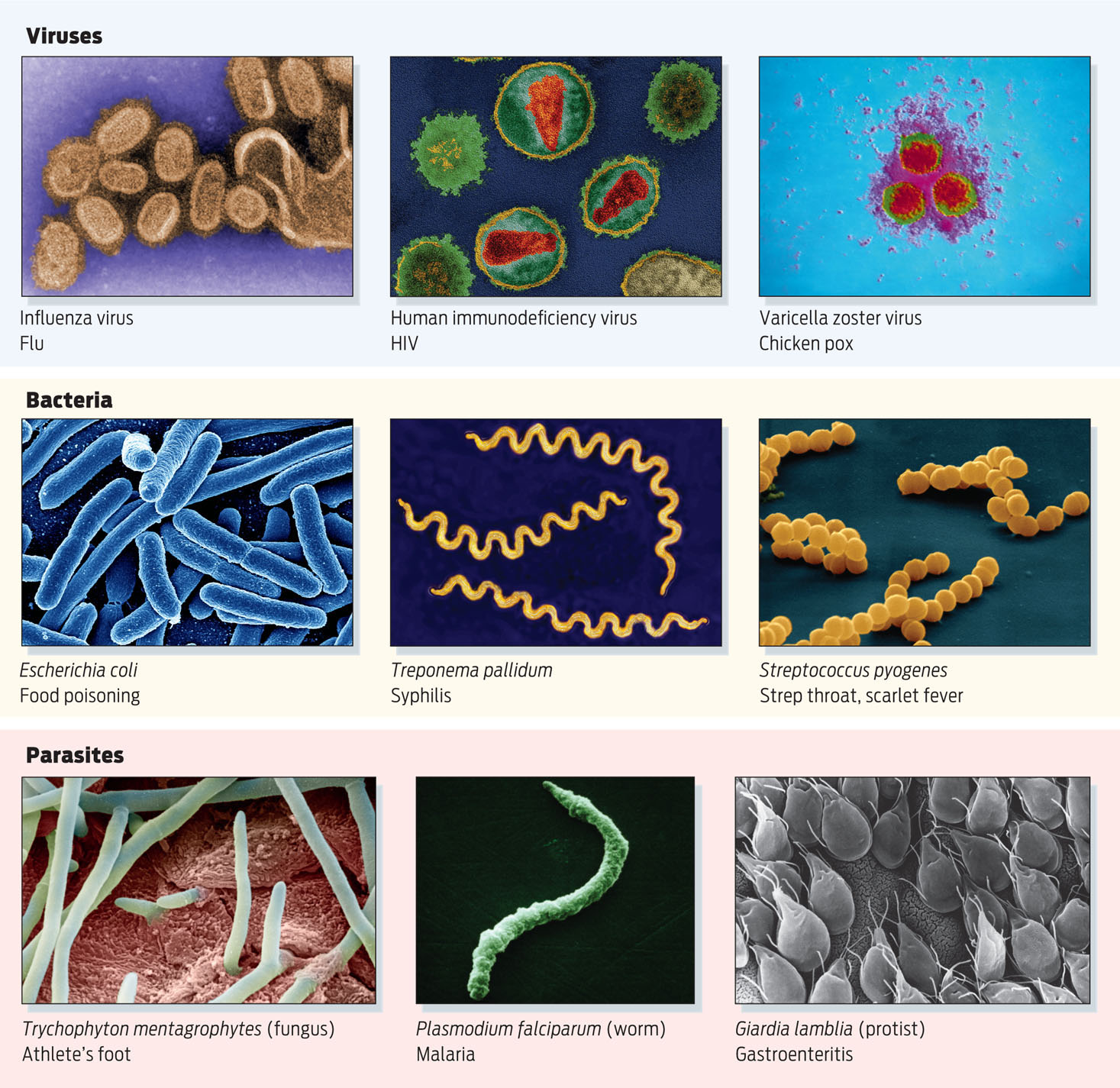A MICROSCOPIC BATTLEGROUND
Some early clues as to what made the 1918 flu infection so deadly came from examining victims’ bodies. Autopsies performed at the time showed that the infection caused extensive damage to the lungs. In severe cases, the lungs looked torn apart, as if ravaged by shrapnel.
PATHOGENS Infectious agents, including certain viruses, bacteria, fungi, and parasites. Many pathogens trigger an immune response.
Today we know that victims’ lungs were severely damaged not by the virus itself but by all the defenses the body unleashed to fight the virus. The victims’ immune systems reacted so strongly against the infection that the lungs filled with fluid, making breathing impossible. Victims literally suffocated from their own fluids. Though disastrous, this response was actually a sign that the immune system was trying to fight the infection. The lungs were the central battleground of the war between influenza and its human host.
Like an army, the body’s immune system defends the body from different kinds of pathogens—infectious agents such as viruses, bacteria, and parasites. The immune system basically reacts against anything it encounters as foreign, or “nonself,” and tries to destroy it (INFOGRAPHIC 31.2).
695
In-Class Activity
Click here to access Application Activities: HIV specifically designed for chapter 31.

IMMUNITY The resistance to a given pathogen conferred by the activity of the immune system.
INNATE IMMUNITY Nonspecific defenses, such as physical and chemical barriers and specialized white blood cells that are present from birth and require little or no time to become active.
The human immune system has two primary lines of defense that coordinate to protect us from pathogens, providing us with immunity. The first includes physical and chemical barriers such as the skin and mucous membranes, which block invaders from entering the body. It also includes defensive proteins and a variety of white blood cells that serve as sentries and engulf invaders. Because we are born with these defense mechanisms, they are referred to as innate immunity. Innate defenses are effective but nonspecific defenses, in that they attack a wide variety of invaders but do not discriminate among them. These defenses are always present and require little or no time to become active.
ADAPTIVE IMMUNITY A protective response, mediated by lymphocytes, that confers long-lasting immunity against specific pathogens.
696
LYMPHOCYTE A specialized white blood cell of the immune system. Lymphocytes are important in adaptive immunity.
The second line of defense is called adaptive immunity and includes the coordinated actions of specialized white blood cells called lymphocytes. Adaptive immunity takes time to develop, but it is targeted and discriminating: it “learns” to respond to specific pathogens and substances. This phenomenon of learning is important because there are many types of pathogens and they evolve quickly, so our immune system must be capable of adapting to new invaders if it is to adequately protect us (INFOGRAPHIC 31.3).
Innate defenses protect us from a variety of invaders, but do not distinguish between specific pathogens. They are always present, and require little or no time to become active. Adaptive immunity relies on the action of white blood cells called lymphocytes to mount a unique defense against each specific invader.
